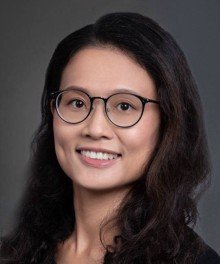
Shoulder pain may be caused by various conditions, such as frozen shoulder, shoulder arthritis, or a rotator cuff tear, the latter of which is a commonly seen, degenerative condition. Patients with a rotator cuff tear may experience shoulder pain, weakness in the shoulder joint, or a sudden feeling of weakness when they move their arm, which can affect daily activities such as wearing clothes, washing hair, and sleeping. Studies show that individuals between the ages of 60 and 70 have a 30% chance of developing this condition, while those over the age of 70 have a 60% chance.
The rotator cuff is comprised of four tendons that connect four muscles. Wrapping around the shoulder joint like a sleeve, it acts to stabilize the shoulder joint while allowing it to stretch and rotate in multiple directions.
A rotator cuff tear, which can involve the tearing of one or multiple tendons connecting the shoulder joint muscles and bones, may be caused by acute trauma from a sports injury or lifting heavy objects, or occur as a result of wear and tear with age. However, clinical studies have shown that degenerative tears are more common than those caused by trauma. As tendons age and wear due to prolonged use, they become more prone to tear, which then affects shoulder movement and function. In some cases, a rotator cuff tear may occur as a result of bone spurs rubbing against the tendon over a long period of time.
Shoulder pain that persists for more than four weeks may be a warning sign of an underlying condition, and it is best to seek medical advice. Through history taking, physical examination, and MRI or ultrasound, a doctor will be able to assess the condition of the tendon and whether there is joint inflammation, ruling out other conditions. After diagnosis, if the tendon is discovered to be partially torn, a conservative treatment approach will be taken, which may include prescription of anti-inflammatory and pain relief medications, and physical therapy to strengthen undamaged tendons and muscles and improve the mobility of the shoulder joint.
If there is a complete tear, the doctor will recommend a treatment approach that takes into account the patient’s age and the extent of shoulder function needed for daily activities. One treatment option is shoulder arthroscopy, where the doctor makes a few incisions of about one centimeter each and inserts surgical instruments to reconnect and repair the damaged tendon. After surgery, patients will need to wear a sling for four to six weeks to allow the wound to heal gradually. Physical therapy will follow to facilitate restoration of shoulder strength and function.
There are numerous treatment methods for a rotator cuff tear, each with varying levels of effectiveness and side effects. Patients with questions should consult their physician for more information.
















